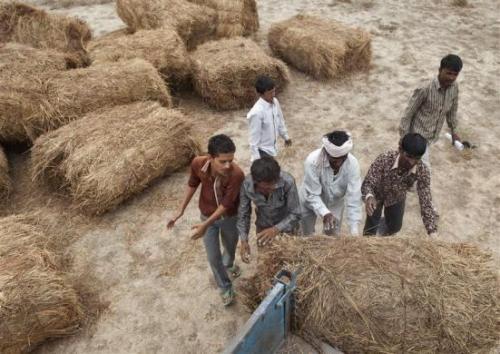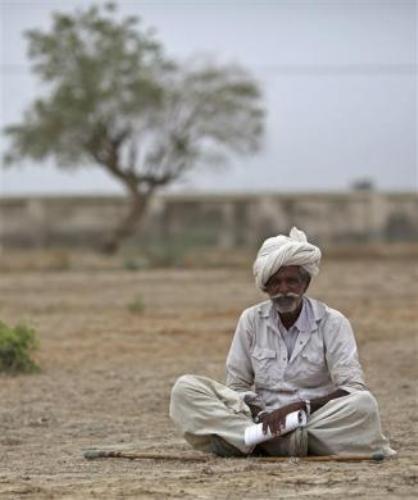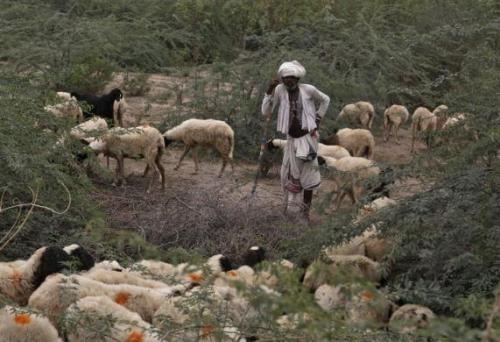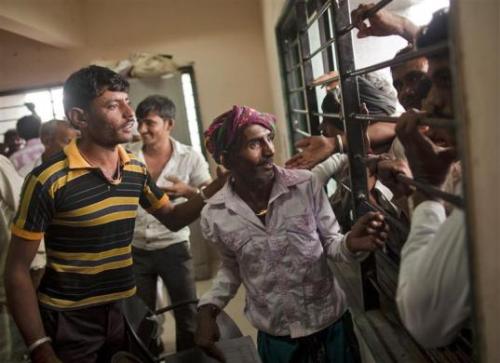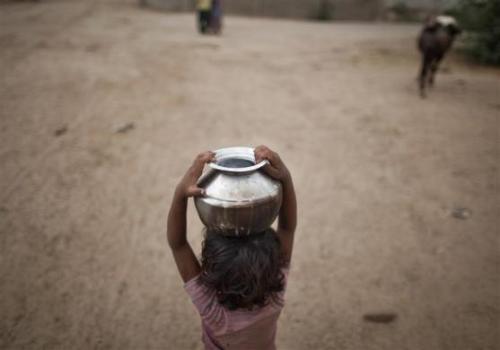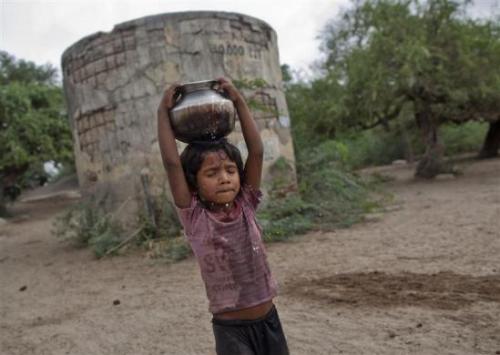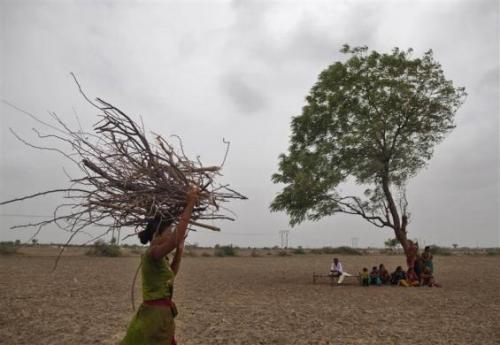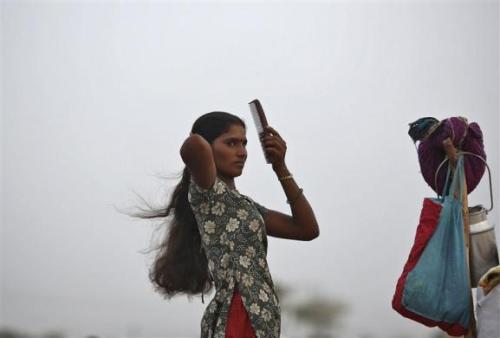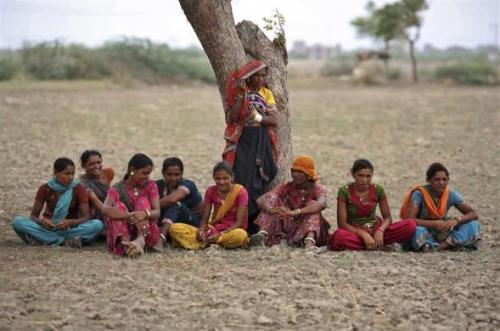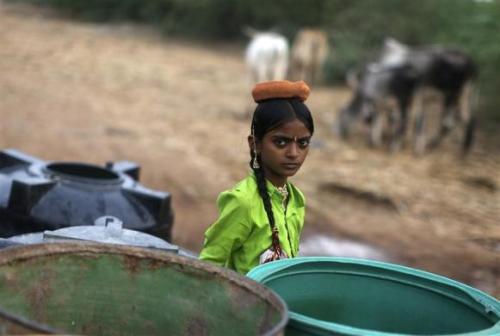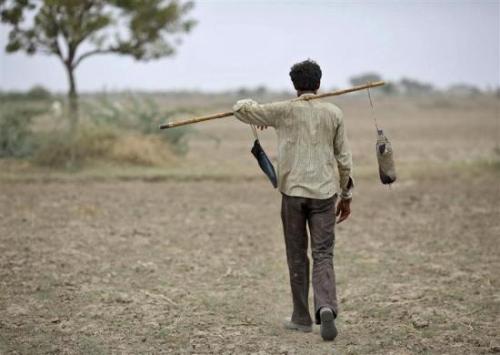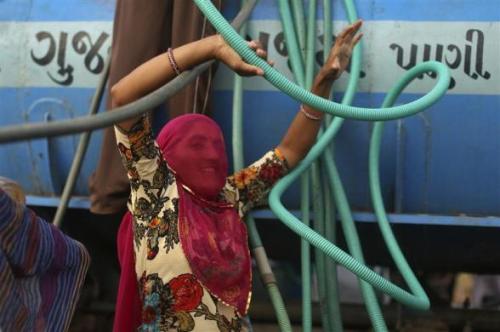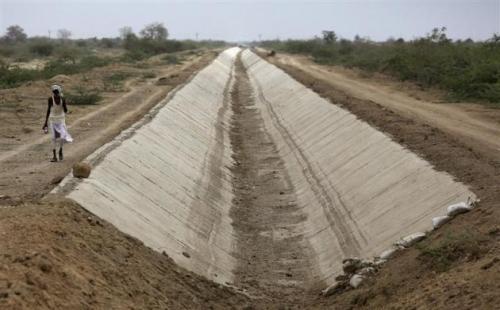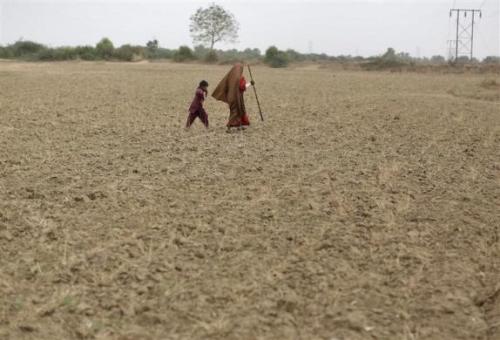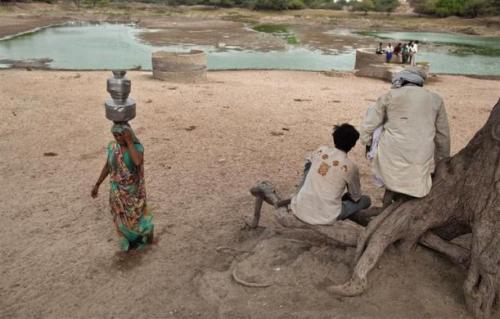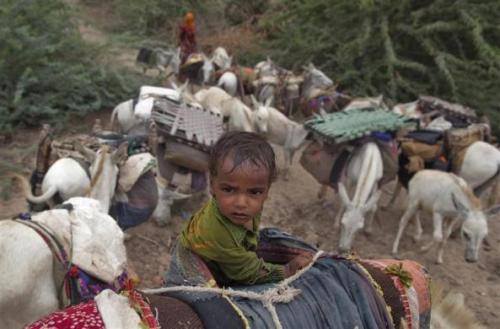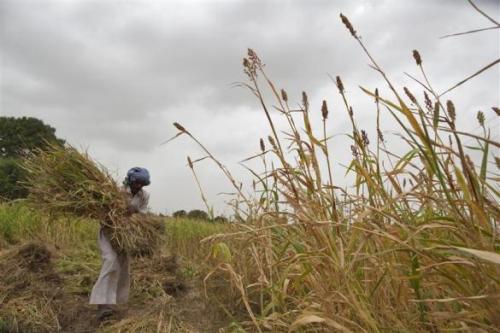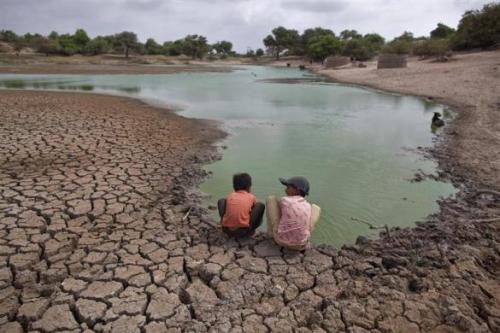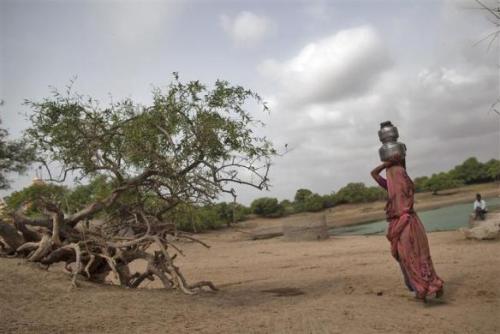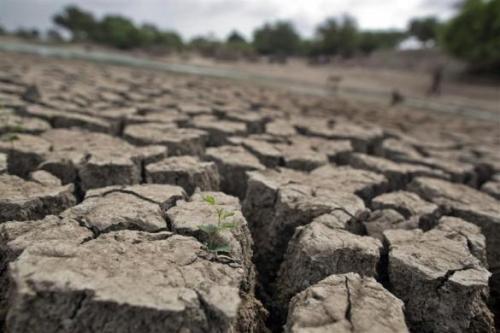 | « Back to article | Print this article |
Drought, a killer in India's growth story
Poor monsoon has shattered the hopes of revival in India's economic growth.
As fears of a drought loom large across many states in India, the farm output, which accounts for 15 per cent of the country's economy, will fall drastically.
As the country struggles with a lower GDP growth rate, low industrial production, high inflation, high fiscal deficit, a poor monsoon can derail growth.
Click NEXT to see how water scarcity has hit farmers across India...
Drought, a killer in India's growth story
Rice production in India is set to fall from record levels, leading to a rise in prices.
Click NEXT to read more...
Drought, a killer in India's growth story
A normal monsoon is crucial for economic growth as over 55 per cent of India's arable land depends on rainfall.
Click NEXT to read more...
Drought, a killer in India's growth story
The poor monsoon has led to a delay in sowing of crops like paddy, cereals, oilseeds and pulses in central and southern India.
Click NEXT to read more...
Drought, a killer in India's growth story
The world may face a food crisis very soon as drought has hit several parts of the world as well.
Click NEXT to read more...
Drought, a killer in India's growth story
Failed crops or lower yields will lead to a fall in GDP. A a weak monsoon can push the GDP below 5 per cent.
Click NEXT to read more...
Drought, a killer in India's growth story
Food and fuel comprise of 22 per cent of the Wholesale Price Index. Pulses and Oil seeds are mostly rain fed and will become more expensive, adding to the inflation woes.
Click NEXT to read more...
Drought, a killer in India's growth story
India gets 75 per cent of the rainfall from the annual monsoon for crops and reservoirs.
Click NEXT to read more...
Drought, a killer in India's growth story
Around 50 per cent of the population depends on farming for a livelihood.
Click NEXT to read more...
Drought, a killer in India's growth story
The drought, India's first since 2009, will severely hit states like Maharashtra, Punjab, Haryana, Rajasthan, Gujarat and Karnataka.
Rajasthan has declared drought in five districts while Karnataka has done so in 142 talukas.
Click NEXT to read more...
Drought, a killer in India's growth story
"The deficient monsoon will pose some difficulty in controlling inflation, Prime Minister Manmohan Singh said.
Click NEXT to read more...
Drought, a killer in India's growth story
Prime Minister Manmohan Singh said that the government has huge wheat and rice stocks and foodgrain supply is not a problem.
Click NEXT to read more...
Drought, a killer in India's growth story
"In districts where there has been a deficit of 50 percent or more in the rainfall, diesel subsidy is being provided to farmers by the government. Seed subsidy has been enhanced. Funds available under the central scheme for fodder have been increased," Manmohan Singh said.
Click NEXT to read more...
Drought, a killer in India's growth story
According to the India Meteorological Department (IMD), as on August 12, overall rainfall deficit for the country as a whole was 16 per cent.
Click NEXT to read more...
Drought, a killer in India's growth story
"Against an average area of 105.70 million hectare under kharif cultivation in the entire country, 85.4 million hectare are normally sown by August 8. This year 80.2 million hectare have been covered under various crops by August 8, 2012," Agriculture Minister Sharad Pawar said.
Click NEXT to read more...
Drought, a killer in India's growth story
At least one farmer has killed himself every day since April this year due to indebtedness, drought, crop-failure or socio-economic and personal reasons.
Of the 152 farmer suicides recorded in the country in 2012-2013 so far, 118 were in Maharashtra alone, according to government data.
Click NEXT to read more...
Drought, a killer in India's growth story
Andhra Pradesh ranks second with 33 cases of suicides by farmers. In Karnataka, there has been a reported case of farmer suicide this year.
Incidentally, Maharashtra and Karnataka are the worst affected by the drought this year.
Click NEXT to read more...
Drought, a killer in India's growth story
The southwest monsoon in parts of Maharashtra was 20-30 per cent below normal till August 14 this year, while in north and south Karnataka, it is around 30 per cent below normal.
The drought will force many villagers to migrate to cities in search of jobs.
Click NEXT to read more...
Drought, a killer in India's growth story
According to the National Crime Records Bureau (NCRB), around 10.3 per cent of the total suicides in the country in 2011 were those involved in farming and agriculture activities.
Click NEXT to read more...
Drought, a killer in India's growth story
The total number of suicides across the country in 2011 was around 1,35,585.
Click NEXT to read more...
Drought, a killer in India's growth story
Between June 1 and June 20, farmers planted rice on 14.46 million hectares, down 10.35 percent from a year earlier period.
Click NEXT to read more...
Drought, a killer in India's growth story
During the drought in 2009, India had to import sugar, even as global prices rose to a record 30-year high.
Click NEXT to read more...
Drought, a killer in India's growth story
India's arable land area of 159.7 million hectares (394.6 million acres) is the second largest in the world, after the United States.
Click NEXT to read more...
Drought, a killer in India's growth story
India's gross irrigated crop area of 82.6 million hectares (215.6 million acres) is the largest in the world.
India has grown to become among the top three global producers of a broad range of crops, including wheat, rice, pulses, cotton, peanuts, fruits, and vegetables.
